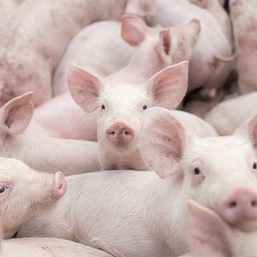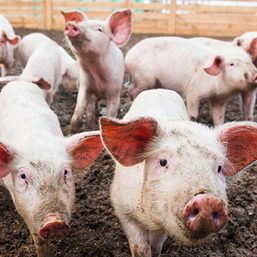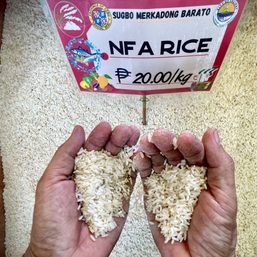SUMMARY
This is AI generated summarization, which may have errors. For context, always refer to the full article.

MANILA, Philippines – Planning menus for Noche Buena and Media Noche is particularly challenging in 2022, with price hikes sure to create a larger dent in the Christmas meal budget of Filipino families.
According to the price guide released by the Department of Trade and Industry (DTI) on November 23, prices of 195 Noche Buena items have increased.
The price increases of common ingredients used to prepare Noche Buena dishes range from P0.50 to P42. These price increases, when viewed individually, may look like they won’t affect your budget. But add them all up, and the combined costs of these items for a single dish would surely surprise you.
So, is P1,000 enough for a Noche Buena meal in 2022?
Using DTI’s price guide, here are the estimated cost of the most common Noche Buena and Media Noche fare.
Christmas ham
Prices now: Half a kilo or 500 grams of Christmas ham costs P163 to P224, while 1 kg sells from P314 to as much as P650.
Prices in 2021: 500 grams of Christmas ham sold for P158 to P199, and 1 kg retailed around P345 to P580.
Difference: Christmas hams had a price increase ranging from P30 to P42, depending on its size and brand.
Spaghetti
Prices now: The ingredients for Filipino-style spaghetti cost anywhere from P310 to P377, depending on the brand of your ingredients.
According to DTI, 500 grams of spaghetti pasta costs P69 to P90, 500g of Filipino-style tomato sauce sells between P42 and P67, and 160 grams of cheese is at P57 to P78.
According to prices at several supermarkets, 500g of ground pork sold for an average price of P142.
Prices in 2021: Filipino-style spaghetti good for four to six people only cost P295 to P345 last year.
500g of spaghetti pasta cost around P55 to P72, and 500g of Filipino-style tomato sauce retailed between P40 and P42.
There are no 160 grams of cheese listed in DTI’s Noche Buena price guide last year. The closest size is 165 grams, which retailed around P50 to P81.
According to DTI’s Bantay Presyo, 500g of pork retailed for an average of P150 in the first week of December 2021.
Difference: The cost of making Filipino-style spaghetti had an increase ranging from P15 to P32.
The sample computation for Filipino-style spaghetti serves four to six people only.
Fruit salad
Prices now: Fruit salad could cost between P153 and P416, depending on the size of serving and your choice of ingredients.
For the basic fruit salad, all-purpose cream (250ml) costs from P63 to P75, while fruit cocktail could cost from P56 for a 432g can to P288 for a 3kg can. Condensed milk prices start at P34 for 168ml to around P53 for a 300ml.
Prices in 2021: Making a fruit salad cost between P134 and P344.
All-purpose cream retailed for P55 to P59, while condensed milk was sold at P29 (168ml) to P45 (300ml).
Fruit cocktail was not included in DTI’s 2021 Noche Buena price guide. In 2020, fruit cocktail retailed for P50 for a 432g can and P240 for a 3kg can.
Difference: Making a fruit salad in 2022 is more expensive by P20 to P72.
Macaroni salad
Prices now: Macaroni salad may cost from P175 to P370.
The price of 200g of elbow macaroni costs from P23 to P44, mayonnaise (470ml) ranges from P97 to P234, and cheese (160 grams) sells between P55 to P92.
Prices in 2021: Macaroni salad cost from P166 to P283. The price 200g of elbow macaroni cost from P19 to P33, while mayonnaise (470ml) ranged from P97 to P169.
Difference: Macaroni salad’s price increased by P9 to P87. The price difference may vary greatly, depending on the brands of the ingredients used.
Queso de bola
Prices now: The price of a 300g queso de bola costs P200, while a 500g-queso de bola is pegged at P310 to P514.
Prices in 2021: There was no 300g queso de bola in DTI’s Noche Buena price guide last year. The closest is 350g, which retailed from P200 to P320, while a 500g queso de bola was priced at P285 to P410.
Difference: 500g-queso de bola’s price increased by P25 to P104.
What a P1,000 Noche Buena meal includes
Using the estimated cost of each Noche Buena dish, a P1,000 Noche Buena meal in 2022 can have:
- 500g Christmas ham – P163
- Filipino-style spaghetti – P310
- Fruit salad – P153
- Macaroni salad – P175
- 300g queso de bola – P200
However, this sample Noche Buena menu is only good for four to six people, and it only uses the cheapest ingredients on DTI’s Noche Buena price list. Any changes in the ingredients can make the cost of the entire meal exceed P1,000.
It is also common for Filipinos to have fewer Noche Buena dishes to focus on increasing the serving size of the main dishes.
Cheaper alternatives
Filipinos can save money if they buy alternatives to the items on the DTI’s price list.
Stores in public markets usually sell repackaged products at lower prices. Repackaged 70g spaghetti sauces and ketchup costs around P5; 470ml mayonnaise costs P70; 150g elbow macaroni pasta costs P15; 5g butter costs P20; and cooking oil costs from P10 to P40, depending on the size.
Filipinos could also opt to buy locally produced Christmas hams in the meat section of public markets. Locally produced Christmas hams weighing 800g are priced at P135, compared to well-known brands that costs from P233 to P520 for the same size.
Another way to economize is to replace ground pork with hotdogs for the Filipino-style spaghetti. A recipe for spaghetti good for four to six people only need one-fourth kilo of hotdogs, which only costs P78, or half the price of half a kilo of ground pork. – Rappler.com
Add a comment
How does this make you feel?



![[ANALYSIS] A post mortem on the rice price ceiling](https://www.rappler.com/tachyon/2023/10/tl-riceceiling.jpg?resize=257%2C257&crop=245px%2C0px%2C720px%2C720px)
![[EDITORIAL] Talagang ‘ibang usapin ang bigas’](https://www.rappler.com/tachyon/2023/10/animated-rice-inflation-bbm-carousel.jpg?resize=257%2C257&crop_strategy=attention)
There are no comments yet. Add your comment to start the conversation.